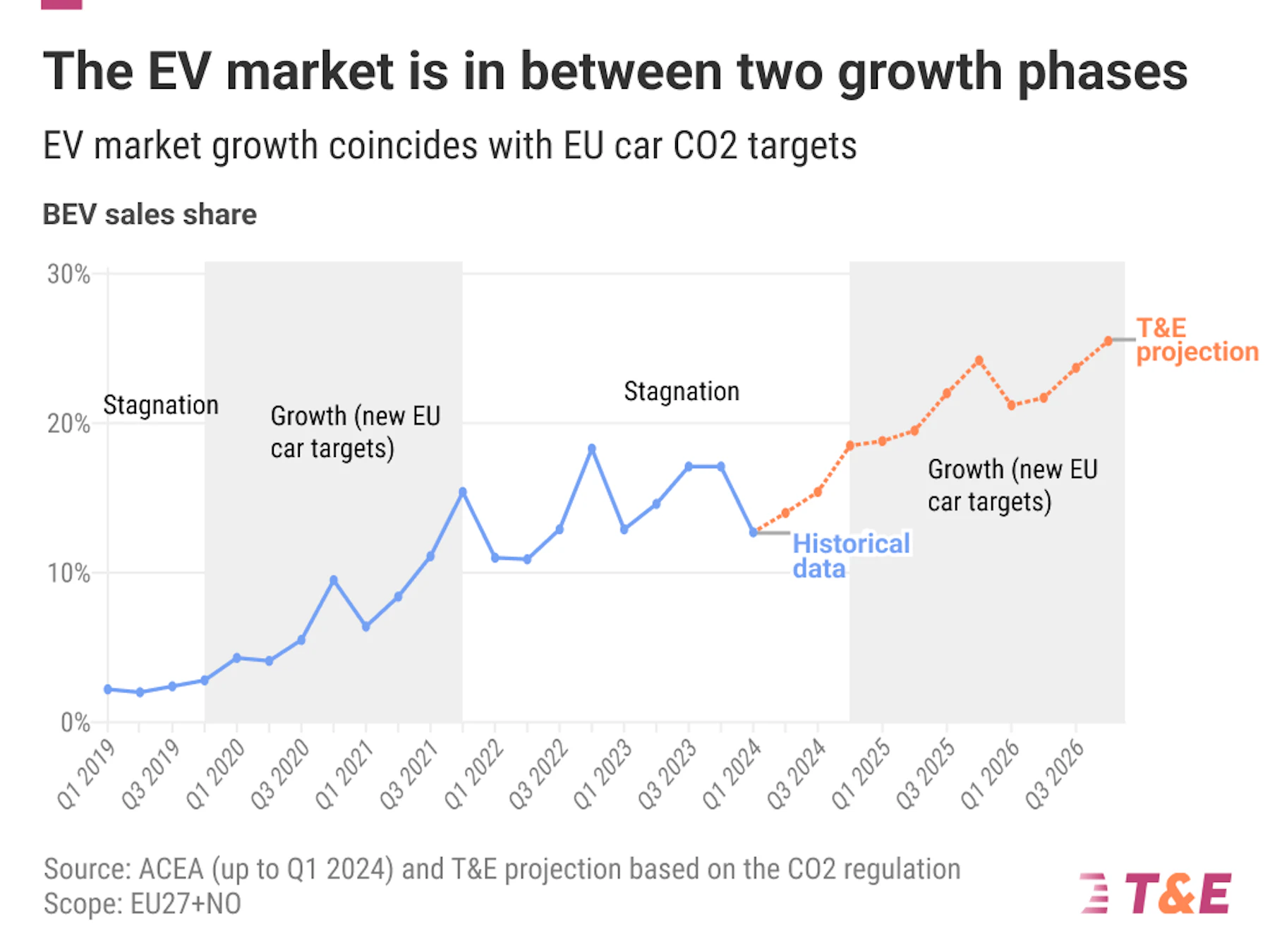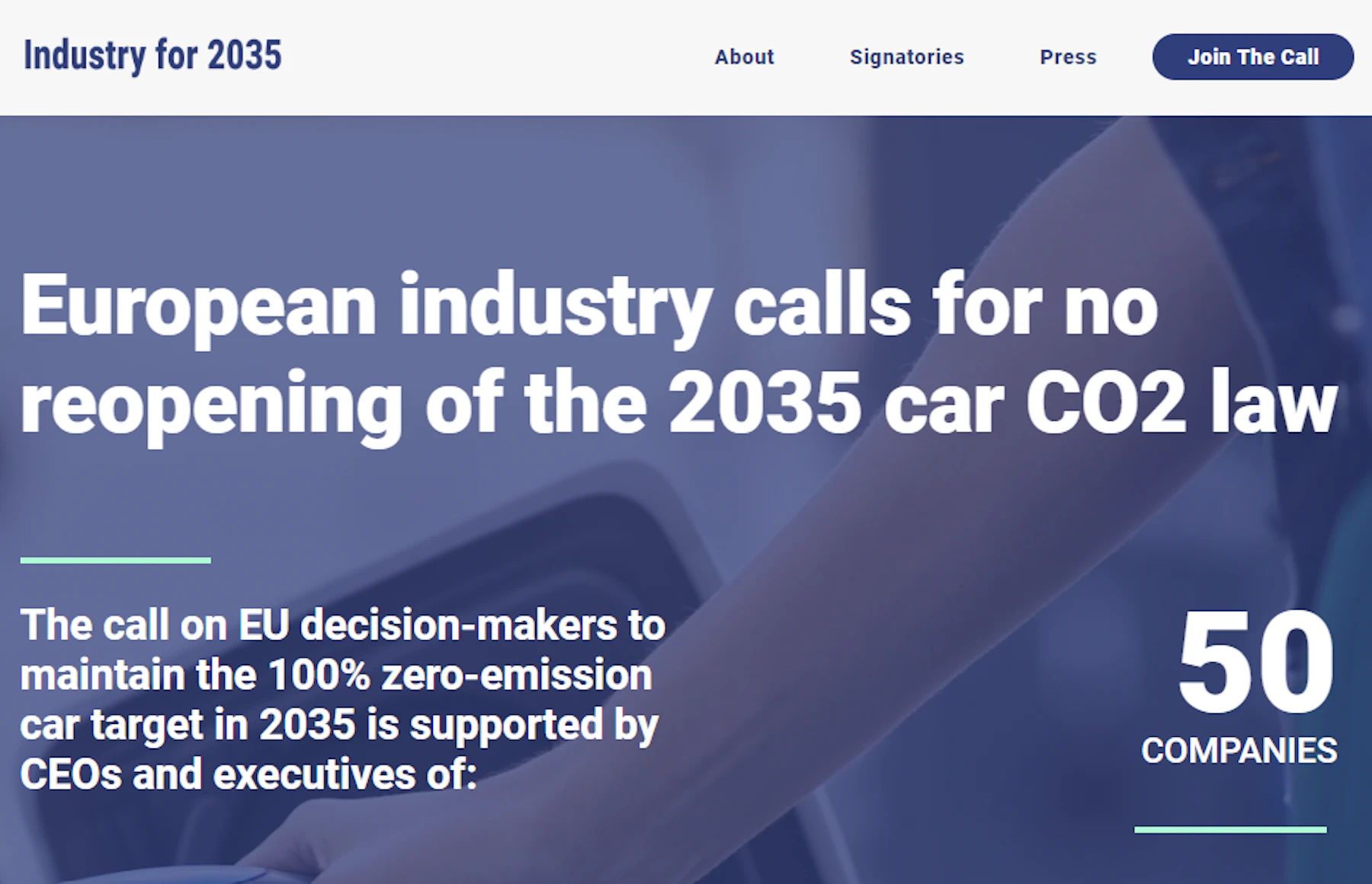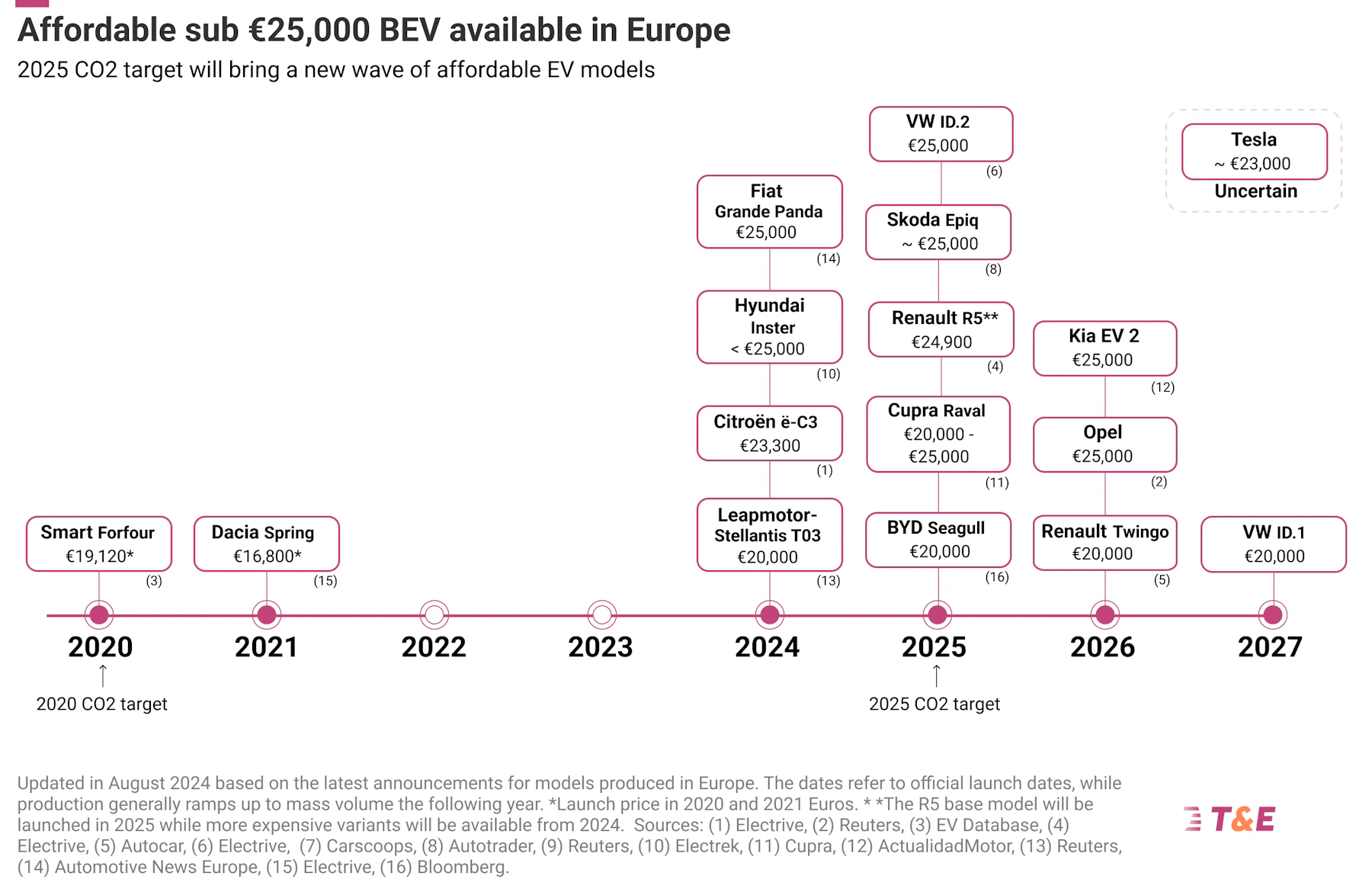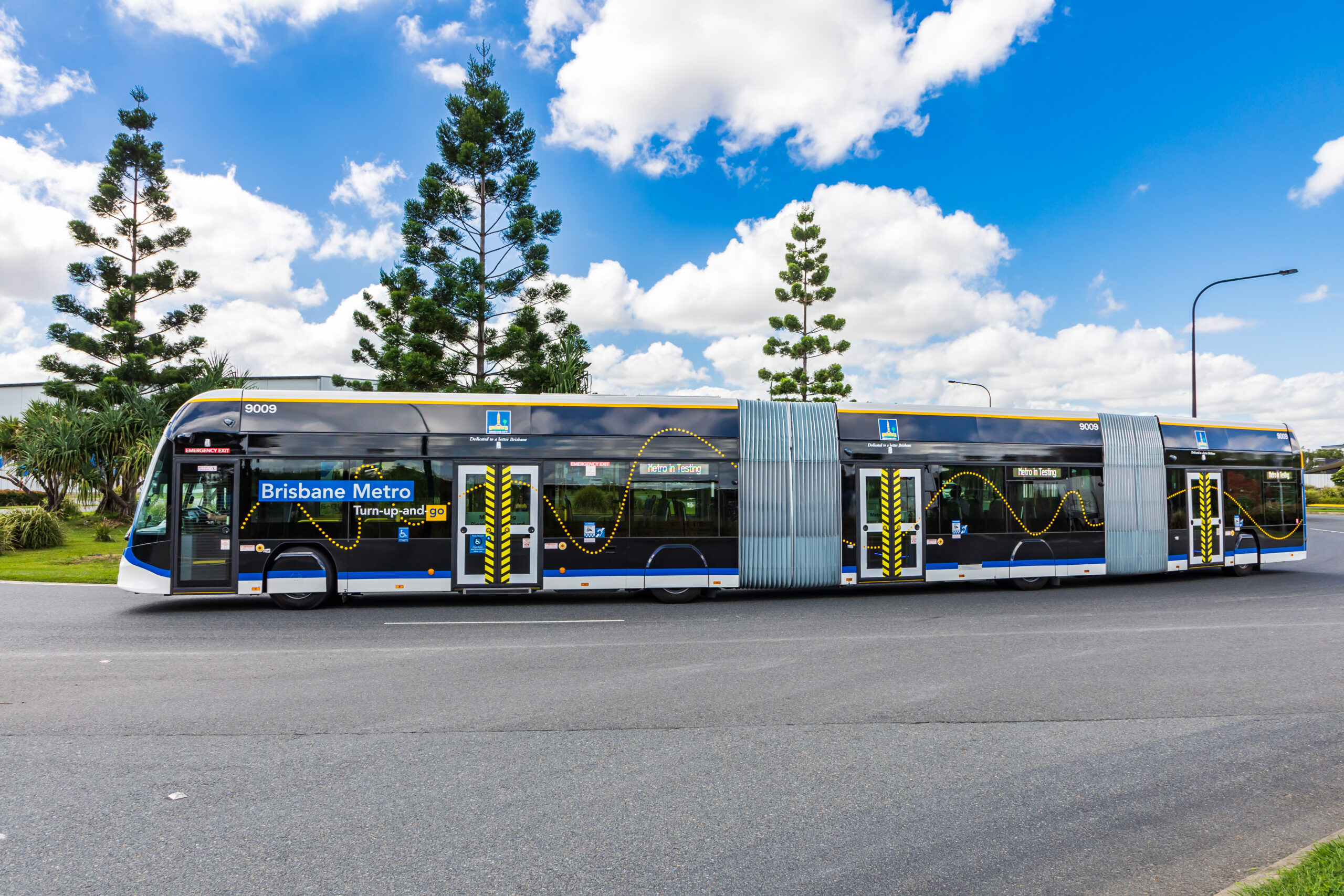Sign up for daily news updates from CleanTechnica on email. Or follow us on Google News!
A T&E briefing outlines why the 2035 goal is so important and why the EU should not reverse it.
1. Why is it important for the climate, the economy and jobs in Europe?
Maintaining the ambition of the EU car CO2 standards, including the 2035 100% zero emission target is crucial for providing carmakers and the emobility value chain with the regulatory certainty needed to securely invest in electric car, battery production and charging infrastructure in Europe. In September 2024, 50 CEOs and executives called on the new EU Commission and MEPs to “maintain the 100% zero-emission car target in 2035”.
The car CO2 regulation has been the main driver of investment in the EV value chain in Europe. With the introduction of the EU car CO2 targets in 2020, EV investments in Europe increased by a factor of 20 (from €3.2 bn to €60 bn). More than 50 European gigafactories are planned to produce battery cells by 2030, requiring more than €170 billion in investments, sufficient to power all new vehicle sales in the EU from 2026.
With uncertainty over its 2035 zero-emission car target and a weak industrial policy, Europe is proving less attractive to electric vehicle manufacturers. While €70 billion of EV investment by carmakers has been announced for Europe between 2021 and 2023, North America, attracted €97 billion over the same period. Any weakening of the targets will further reduce the attractiveness of Europe as an investment destination.
A study by BCG analysed the impact of a shift to EVs on jobs in the automotive sector and showed that jobs lost in the traditional fossil-fuel focussed industries would be offset by new jobs in the fast growing e-mobility value chain.
Climate
Achieving climate neutrality by 2050 requires the EU to eliminate fossil fuels, especially from the transport sector, which accounts for 29% of EU emissions. Light duty vehicles (cars and vans) are responsible for around half of these emissions. EVs emit significantly less CO2 over their lifecycle compared to petrol or diesel cars, making them essential in combating climate change.
Car CO2 regulation: how does it work?
The car CO2 regulation sets legally binding targets for average CO2 emissions from new cars sold by carmakers annually. The regulation operates in five-year steps, creating an inevitable acceleration-stagnation momentum. The same targets apply from 2021 to 2024, with the next targets being a 15% reduction in 2025 (versus 2021), a 55% reduction in 2030, and a 100% reduction by 2035. Until now those targets have been met by almost all carmakers and the same is expected for future targets. Technological advancements and compliance options, such as pooling with other carmakers, CO2 bonus for selling a certain number of EVs, and using eco-credits, support this compliance. The regulation contains a clause to review the regulation in 2026.
=
2. The 2035 100% zero emission car target is feasible
A Bloomberg study shows that reaching 100% electric cars and vans in 2035 is feasible. Battery electric cars will be cheaper to buy in Europe than fossil-fuel vehicles by 2028 at the latest. In many cases this will come earlier as carmakers have announced a dozen affordable, sub-€25,000 Made-in-Europe EV models for 2024-2027. Combined with much lower running costs, the EV transition is bound to be irreversible.
Achieving climate neutrality by 2050 requires the EU to eliminate fossil fuels, especially from the transport sector, which accounts for 29% of EU emissions. Light duty vehicles (cars and vans) are responsible for around half of these emissions. EVs emit significantly less CO2 over their lifecycle compared to petrol or diesel cars, making them essential in combating climate change.
The car CO2 regulation sets legally binding targets for average CO2 emissions from new cars sold by carmakers annually. The regulation operates in five-year steps, creating an inevitable acceleration-stagnation momentum. The same targets apply from 2021 to 2024, with the next targets being a 15% reduction in 2025 (versus 2021), a 55% reduction in 2030, and a 100% reduction by 2035. Until now those targets have been met by almost all carmakers and the same is expected for future targets. Technological advancements and compliance options, such as pooling with other carmakers, CO2 bonus for selling a certain number of EVs, and using eco-credits, support this compliance. The regulation contains a clause to review the regulation in 2026.
In addition, binding EU regulation mandates that the EU’s main highways and roads be covered with fast chargers from 2025, and that the number of chargers overall increase in line with the uptake of electric vehicles in each member state.
Most car companies, including Volkswagen have been in support of the 2035 target as they need investment certainty. Fundamentally, the question of feasibility is not a matter of technical feasibility but rather a matter of political willingness and commitment to existing climate and industrial policies.
3. What is needed for the new EU legislative term
First, European carmakers and politicians need to be firmly committed to the 2035 target and to accelerate the ramp up of electric car models, especially the more affordable ones. In particular, the EU should not get sidetracked by polluting, inefficient and expensive synthetic fuels (or e-fuels) and biofuels.
Second, the new EU Commission should support an ambitious industrial strategy to accelerate and scale up the European e-mobility value chain, with a focus on attracting investment to Europe, R&D clean local manufacturing, and upskilling of local workers.
Courtesy of Transport & Environment.

Have a tip for CleanTechnica? Want to advertise? Want to suggest a guest for our CleanTech Talk podcast? Contact us here.
Latest CleanTechnica.TV Videos
CleanTechnica uses affiliate links. See our policy here.
CleanTechnica’s Comment Policy







